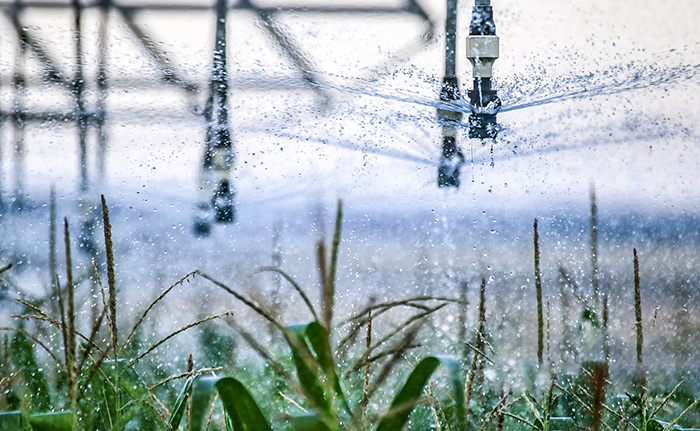Understanding Steam Control Valves
To concurrently lower steam pressure and temperature to the level required by a specific working state, steam regulating valves are utilized. These applications frequently have extremely high inlet pressures and temperatures, both of which must be greatly decreased. As a result, forging and combination are the preferred manufacturing processes for these valve bodies because they can better sustain the steam load at high pressure and high temperature. Forged materials permit greater design stresses than cast valve bodies, have a better optimized crystal structure, and have intrinsic material consistency.
Manufacturers can more readily offer intermediate grades and up to Class 4500 thanks to forged structure. When pressures and temperatures are lower or an in-line valve is needed, cast valve bodies are still a solid option.
The forged plus combination valve body type enables the inclusion of an extended outlet to manage outlet steam velocity at lower pressures in response to frequent dramatic variations in steam characteristics caused by lowered temperature and pressure. Similar to this, manufacturers can offer inlet and outlet connections with various pressure ratings to better match nearby pipelines in response to decreased outlet pressure by using forged plus combination steam control valves.
In addition to these benefits, combining cooling and pressure reduction operations in a single valve has the following advantages over two separate units:
1. Better spray water mixing as a result of the decompression element’s turbulent expansion zone being optimized.
2. An enhanced variable ratio
3. Installation and maintenance are rather straightforward because it is a piece of equipment.
We can offer a variety of steam control valves to fulfill various application requirements. Here are a few typical instances.
steam control valve
The steam regulating valve, which embodies the most cutting-edge steam temperature and pressure control technology, combines steam pressure and temperature control in a single control unit. With growing energy prices and stricter plant operating requirements, these valves answer the demand for better steam management. The steam control valve can offer greater temperature control and noise reduction than the temperature and pressure reduction station with the same function, and it is also less constrained by pipeline and installation requirements.
Steam regulating valves have a single valve that controls both pressure and temperature. Design, development, improvement of structural integrity, and optimization of operational performance and overall dependability of valves are accomplished using Finite Element Analysis (FEA) and Computational Fluid Dynamics (CFD). The steam control valve’s sturdy construction shows that it can withstand the whole pressure drop of the main steam, and the flow path’s use of control valve noise reduction technology helps to minimize unwanted noise and vibration.
The fast temperature variations that take place during turbine startup can be accommodated by the streamlined trim design utilized in steam control valves. For a longer lifespan and to permit expansion when deflected by thermal shock, the cage is case-hardened. The valve core has a continuous guide, and cobalt inserts are used to produce a tight metal seal with the valve seat in addition to providing guide material.
The steam regulating valve has a manifold for spraying water once the pressure is decreased. The manifold has back pressure activated nozzles and variable geometry to enhance water mixing and evaporation.
The downstream vapor pressure of centralized condensing systems, where saturation conditions can occur, is where this nozzle was initially intended to be used. This kind of nozzle enhances the device’s adaptability by enabling a lower minimum flow. This is accomplished by reducing the backpressure at the dP nozzle. Another advantage is that flash occurs at the nozzle outlet rather than the sprinkler valve trim when nozzle dP is increased at smaller apertures.
When flash happens, the valve plug’s spring load in the nozzle pushes it shut to prevent any such alterations. The fluid’s compressibility changes during a flash, which causes the nozzle spring to force it shut and recompress the fluid. Following these procedures, the fluid regains its liquid state and can be reshaped into the cooler.
Variable geometry and back pressure activated nozzles
The steam regulation valve directs water flow away from the pipe wall and toward the pipe’s center. With different applications come different numbers of spray points. The outlet diameter of the regulating valve will be greatly expanded to meet the required much higher steam volume if the steam pressure differential is significant. To achieve a more equal and thorough distribution of the sprayed water, more nozzles are consequently put around the outlet.
A streamlined trim arrangement in a steam regulating valve enables it to be used at higher operating temperatures and pressure ratings (to ANSI Class 2500 or above).
The steam control valve’s balanced plug structure offers Class V sealing and linear flow characteristics. Steam control valves commonly use digital valve controllers and high performance pneumatic piston actuators to complete a full stroke in less than 2 seconds while maintaining high accuracy step response.
Steam regulating valves can be provided as distinct components if the piping configuration calls for it, allowing for pressure control in the valve body and desuperheating in the downstream steam cooler. Additionally, if it is not financially feasible, it is also conceivable to pair plug-in desuperheaters with cast straight-way valve bodies.
Post time: May-19-2023




